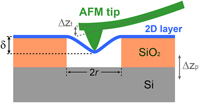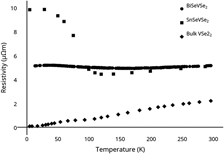Focus Issue: Two-Dimensional Heterostructure Materials
Two-Dimensional Heterostructure Materials
Introduction
-
- Published online by Cambridge University Press:
- 11 April 2016, p. 823
-
- Article
- Export citation
Invited Reviews
Synthesis of large scale MoS2 for electronics and energy applications
-
- Published online by Cambridge University Press:
- 11 April 2016, pp. 824-831
-
- Article
- Export citation
Mechanical properties of two-dimensional materials and heterostructures
-
- Published online by Cambridge University Press:
- 30 October 2015, pp. 832-844
-
- Article
-
- You have access
- HTML
- Export citation
Review
Graphene and monolayer transition-metal dichalcogenides: properties and devices
-
- Published online by Cambridge University Press:
- 26 January 2016, pp. 845-877
-
- Article
- Export citation
Invited Articles
Enhanced lithium adsorption/diffusion and improved Li capacity on SnS2 nanoribbons: A computational investigation
-
- Published online by Cambridge University Press:
- 02 November 2015, pp. 878-885
-
- Article
- Export citation
Transport properties of VSe2 monolayers separated by bilayers of BiSe
-
- Published online by Cambridge University Press:
- 21 December 2015, pp. 886-892
-
- Article
- Export citation
Effect of underlying boron nitride thickness on photocurrent response in molybdenum disulfide - boron nitride heterostructures
-
- Published online by Cambridge University Press:
- 06 January 2016, pp. 893-899
-
- Article
- Export citation
Controllable growth of layered selenide and telluride heterostructures and superlattices using molecular beam epitaxy
-
- Published online by Cambridge University Press:
- 06 January 2016, pp. 900-910
-
- Article
-
- You have access
- HTML
- Export citation
Surface states in a monolayer MoS2 transistor
-
- Published online by Cambridge University Press:
- 26 January 2016, pp. 911-916
-
- Article
- Export citation
Large area chemical vapor deposition growth of monolayer MoSe2 and its controlled sulfurization to MoS2
-
- Published online by Cambridge University Press:
- 28 January 2016, pp. 917-922
-
- Article
- Export citation
Persistent photoconductivity in two-dimensional Mo1−x W x Se2–MoSe2 van der Waals heterojunctions
-
- Published online by Cambridge University Press:
- 16 February 2016, pp. 923-930
-
- Article
-
- You have access
- HTML
- Export citation
Distinct photoluminescence and Raman spectroscopy signatures for identifying highly crystalline WS2 monolayers produced by different growth methods
-
- Published online by Cambridge University Press:
- 08 March 2016, pp. 931-944
-
- Article
- Export citation
Formation of hexagonal boron nitride on graphene-covered copper surfaces
-
- Published online by Cambridge University Press:
- 23 March 2016, pp. 945-958
-
- Article
- Export citation
Perturbation theory for weakly coupled two-dimensional layers
-
- Published online by Cambridge University Press:
- 28 March 2016, pp. 959-966
-
- Article
- Export citation
Article
Direct synthesis of ultra-thin large area transition metal dichalcogenides and their heterostructures on stretchable polymer surfaces
-
- Published online by Cambridge University Press:
- 03 March 2016, pp. 967-974
-
- Article
- Export citation
Errata
Errata
-
- Published online by Cambridge University Press:
- 11 April 2016, p. 975
-
- Article
-
- You have access
- HTML
- Export citation
Front Cover (OFC, IFC) and matter
JMR volume 31 issue 7 Cover and Front matter
-
- Published online by Cambridge University Press:
- 11 April 2016, pp. f1-f5
-
- Article
-
- You have access
- Export citation
Back Cover (OBC, IBC) and matter
JMR volume 31 issue 7 Cover and Back matter
-
- Published online by Cambridge University Press:
- 11 April 2016, pp. b1-b5
-
- Article
-
- You have access
- Export citation















